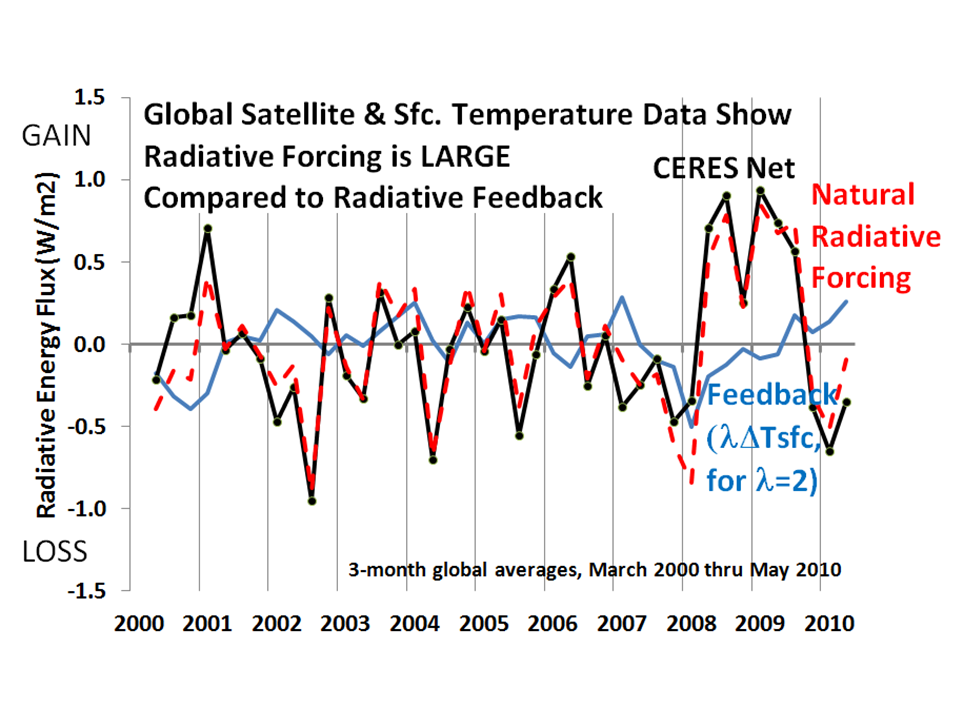…sometimes, the most powerful evidence is right in front of your face…..
I never dreamed that anyone would dispute the claim that cloud changes can cause “cloud radiative forcing” of the climate system, in addition to their role as responding to surface temperature changes (“cloud radiative feedback”). (NOTE: “Cloud radiative forcing” traditionally has multiple meanings. Caveat emptor.)
But that’s exactly what has happened. Andy Dessler’s 2010 and 2011 papers have claimed, both implicitly and explicitly, that in the context of climate, with very few exceptions, cloud changes must be the result of temperature change only.
Shortly after we became aware of Andy’s latest paper, which finally appeared in GRL on October 1, I realized the most obvious and most powerful evidence of the existence of cloud radiative forcing was staring us in the face. We had actually alluded to this in our previous papers, but there are so many ways to approach the issue that it’s easy to get sidetracked by details, and forget about the Big Picture.
Well, the following graph is the Big Picture. It shows the 3-month variations in CERES-measured global radiative energy balance (which Dessler agrees is made up of forcing and feedback), and it also shows an estimate of the radiative feedback alone using HadCRUT3 global temperature anomalies, assuming a feedback parameter (λ) of 2 Watts per sq. meter per deg (click for full-size version):

What this graph shows is very simple, but also very powerful: The radiative variations CERES measures look nothing like what the radiative feedback should look like. You can put in any feedback parameter you want (the IPCC models range from 0.91 to 1.87…I think it could be more like 3 to 6 in the real climate system), and you will come to the same conclusion.
And if CERES is measuring something very different from radiative feedback, it must — by definition — be radiative forcing (for the detail-oriented folks, forcing = Net + feedback…where Net is very close to the negative of [LW+SW]).
The above chart makes it clear that radiative feedback is only a small portion of what CERES measures. There is no way around this conclusion.
Now, our 3 previous papers on this subject have dealt with trying to understand the extent to which this large radiative forcing signal (or whatever you want to call it) corrupts the diagnosis of feedback. That such radiative forcing exists seemed to me to be beyond dispute. Apparently, it wasn’t. Dessler (2011) tries to make the case that the radiative variations measured by CERES are not enough energy to change the temperature of the ocean mixed layer…but that is a separate issue; the issue addressed by our previous 3 papers is the extent to which radiative forcing masks radiative feedback. [For those interested, over the same period of record (April 2000 through June 2010) the standard deviation of the Levitus-observed 3-month changes in temperature with time of the upper 200 meters of the global oceans corresponds to 2.5 Watts per sq. meter]
I just wanted to put this evidence out there for people to see and understand in advance. It will be indeed part of our response to Dessler 2011, but Danny Braswell and I have so many things to say about that paper, it’s going to take time to address all of the ways in which (we think) Dessler is wrong, misused our model, and misrepresented our position.

 Home/Blog
Home/Blog



